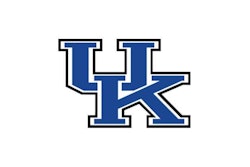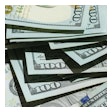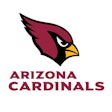Copyright 2014 The Columbus Dispatch
All Rights Reserved
The NHL, as it expanded in the last decade of the last century, had a chance to get bigger in another fashion. Twenty-six arenas were built or renovated in the past 20 years. The opportunity was there to install Olympic-sized ice sheets throughout the league.
It was not done, primarily because it did not occur to the people who run the league. This is the NHL: It leaves knuckle tracks.
The issue of rink size has not gone away, and it will linger as long as the NHL keeps its small ice and the International Ice Hockey Federation, the game's world governing body, maintains a bigger pond. There are arguments on either side.
The NHL rink is 15 feet narrower. It also differs in where the lines are painted: Its neutral zone is 6 feet shorter and its attack zones, from the blue lines down to the goal lines, are 6 feet longer.
That makes for more of a straight-line, north-south game, invites more shots from different angles and lends defensemen more freedom. Most important, it allows for more dumping and chasing -- and more hitting.
Blue Jackets center Artem Anisimov grew up playing on the Olympic-sized sheets that are ubiquitous in Europe. This morning, in a preliminary-round game at the Sochi Olympics, he will play for Russia against Team USA. They will meet on a big sheet at the Bolshoy Ice Dome.
Anisimov, before he left for Sochi, engaged in the big vs. small argument and said, "I prefer the NHL game. It is more direct, more aggressive. You can score from the blue lines. You can score from the walls. You can forecheck."
No longer is it blasphemous for a non-North American to say something like that, not given the shift in NHL demographics.
The league was 74 percent Canadian and 16.6 percent American in 1990. It now is 52.6 percent Canadian and 24 percent American. Swedes, Russians, Czechs and Finns make up appreciable minorities. A host of other European countries are represented, even France.
Professional hockey has been cross-pollinated. We are seeing signs of it at the Olympics. The world's elite players are forechecking with more alacrity at Sochi. That was not the case at the 2006 Turin Games, the last time Olympians played on a 200-by-100-foot sheet.
On Olympic-sized rinks, the extra space is on the outside. Defenders play a patient, conservative game because they must remain wary of pucks getting behind them. They are usually in position, and have enough room, to get to a dump-in and pass the puck out of danger. That is slowly changing as more Europeans are schooled in the NHL style and their tactics evolve.
Those who prefer the small ice do not care for the puck-possession game on the big ice, where forwards are often left alone on the walls and cycling is more common than hitting. Again, it is a space issue. Defenders can get worn out chasing the puck. Once their positioning breaks down, a back-door scoring chance materializes in an instant. There is a cerebral tameness to it all.
I get that, but I do not mind cerebral. And I love the extra space, and those who know how to use it. Artists can thrive on the small ice because they have the finer skills suited for tighter spaces -- but I like them on the bigger canvas, where there is more room to create. Pace is rewarded on the big ice. Odd-man rushes are rife. Turnovers are killers. Power plays are a blast.
Watch the game this morning.
In the 20 years of the expansion era and the building boom, NHL players have gotten bigger, faster and stronger. Coaches have made it a priority to eliminate passing and shooting lanes. Goaltenders have made an evolutionary leap. The rinks have shrunk.
At this point, the cost of converting 30 arenas to Olympic-sized ice is prohibitive. There might come a day, though, when it will be seen as a brilliant investment.
Michael Arace is a sports reporter for The Dispatch.
@MichaelArace1
Terms and Conditions Privacy Policy































